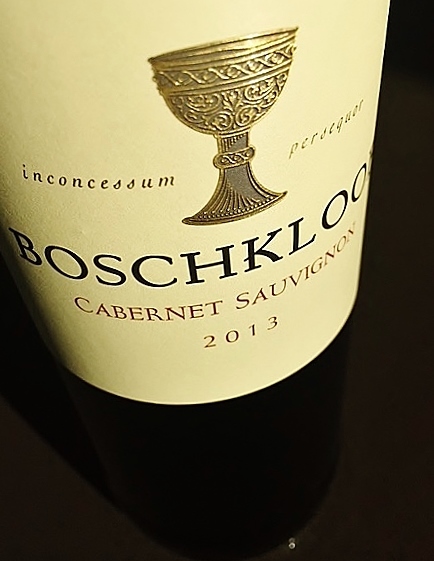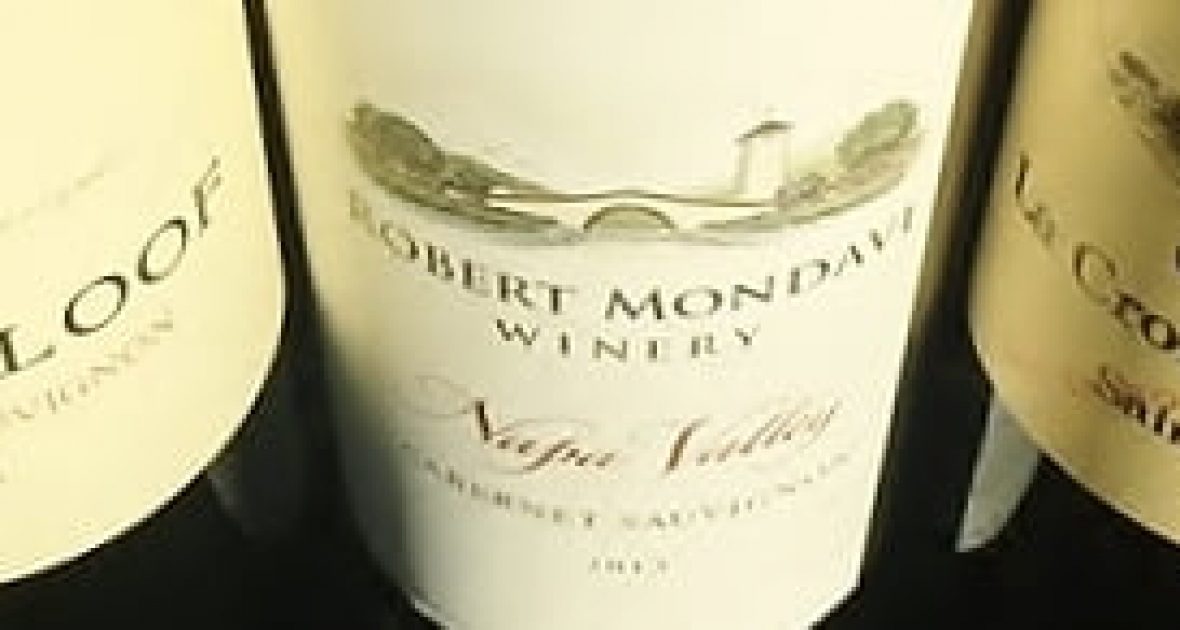By all rights, Cabernet Sauvignon probably shouldn’t exist. Every time cross-pollination happens (in this particular case it was Cabernet Franc and Sauvignon Blanc), the DNA gets twisted around in a plethora of different sequences. Basically, a Cabernet Franc vine happened to be planted near a Sauvignon Blanc vine. The wind carried pollen from one vine onto the budding flowers of the other, and the result was a vine full of berries, each with its own particular genetic structure showing dominant or recessive characteristics of each parent. Of course, we need our hero, Cabernet Sauvignon, to survive so we can go on singing its praises today, so what happened? Most likely, a bird flew by and from the hundreds of grapes available, chose to eat the magic Cabernet Sauvignon berry. He pooped out the seeds, a brand new vine grew, a farmer made wine from those grapes and thought it was tasty… and the rest is history! (Makes you wonder what other genetic sequences were possible, doesn’t it?) Fate? Coincidence? Blessing from the gods? Yep.
Climate is one of the biggest factors in how any wine tastes. If you’re drinking Cabernet from a warm climate like Napa or Australia, you’re going to get oodles of juicy, ripe fruit on the nose and palate. If you’re drinking one from a cooler climate like Chile or maybe Bordeaux, you’ll notice many other things that aren’t fruit—things like graphite, pencil shavings, or green bell pepper. The truth is that Cab is a thick-skinned son of a gun who likes to take its sweet time ripening. The shorter the growing season is and the less warmth and sun it gets, the less time it has to develop those luscious fruit flavors and aromas we’ve come to expect out of a lot of New World Cabs. Using the following three wines, you’ll get an idea of how the climate factor plays into how the wine tastes. Let the games begin!
 Wine #1: Robert Mondavi Napa Valley Cabernet Sauvignon—Napa Valley, California
Wine #1: Robert Mondavi Napa Valley Cabernet Sauvignon—Napa Valley, California
SIGHT: This New World classic has a vibrant, deep ruby color; and if you look closely, the rim will have a youthful purplish hue to it. If you compare the color here to your other two wines, wines 2 and 3 seem almost dull in comparison. A swirl of the glass will show a few thick, stained legs dripping down the side of your glass.
SMELL: Get out your spice rack and fruit basket! This juicy Cab is packed to the max with candied cherry, plum, black cherry, and a slightly raisinated grapey aroma. Check your spices to see if you find notes of allspice, fennel, tarragon leaf, clove, or caraway seed as well. And is it just me, or does anyone else get a familiar whiff of Perkins’ blueberry pancake syrup…?
TASTE: Flavors of sweet red and black fruits dominate here, along with a hint of tart cranberry concentrate. The structure of a wine is divided up into the following components: body (how thick or thin a wine feels on your tongue), tannin (the drying feeling present on your tongue, cheeks and gums), acidity (presents itself as tartness, a mouthwatering sensation, or sometimes a grippiness in your gums), and alcohol (usually a warming sensation in the back of your throat after you swallow). In this wine, we find a medium-full body, medium acidity, medium full alcohol, and probably only medium/medium-full tannins that seem to melt away pretty quickly.
Owing to the huge presence of ripe fruit notes and a nice big, round mouthfeel, we can safely say this Cabernet is a perfect example of a New World style coming from a warm climate. Old Man Mondavi would be proud!
 Wine #2: Boschkloof Cabernet Sauvignon—Stellenbosch, South Africa
Wine #2: Boschkloof Cabernet Sauvignon—Stellenbosch, South Africa
SIGHT: As noted before, this wine’s color is a bit more muted and red-toned than our Mondavi was. This could be classified as having a deep ruby color with more of a garnet tinge at the rim. There’s still a fair bit of staining on the glass when you swirl it, but not quite as pronounced as the Mondavi.
SMELL: This is a great wine to contrast against our first one! There are definitely still notes of black cherry and cassis, but see if you can pick out those non-fruit aromas of smoked meat, charcoal, old cracked leather, tar, black pepper, nutmeg, and eucalyptus. I even checked my dirtiest pair of socks in my laundry basket, and yep—smells familiar! (In the best way possible, of course…)
TASTE: Many of our aromas carry through to the palate, including that beautiful charred meat quality and some dark berry hints—maybe blackberry or bramble. A smoky note in the background adds further complexity, with a gentle mineral element providing lift on the finish. We’ll say that this wine has a medium body—a little lighter than the Mondavi—but firmer, stronger tannins and higher acidity. Whereas the Mondavi sits heavy on your tongue after you swallow, the Boschkloof clears out pretty quickly. The fruit quality is still ripe, but it’s definitely less sweet than the Mondavi. A sharp baking spice note comes through on the finish.
Stellenbosch is the Bordeaux of South Africa. This highly revered mountainous region just off of False Bay gets cooling breezes and plenty of sunshine to grow ripe yet balanced Cabernet. Although still hefty at 14.5% alcohol, the higher acidity present in this Cab makes it a little more balanced than the Mondavi. South Africa is also known for a particular shrubby, scraggly bush called fynbos, which, some may say, adds a peculiar herbal quality that only South African wines seem to have.
 Wine #3: Chateau La Croix St Estephe—Bordeaux, France
Wine #3: Chateau La Croix St Estephe—Bordeaux, France
SIGHT: This wine has a deep ruby color to it—almost black—but the rim fades to that same soft garnet shade that we saw in the last wine. The legs carry much less staining with them compared to the first two wines—a huge hint to where this wine comes from!
SMELL: If the first thing you smell is fruit in this wine, you’ve most likely switched it up with the Mondavi! This is a perfect wine to explain what secondary aromas are: basically, they’re everything you smell other than fruit. Savory elements of cured meat, cedar and maybe some tarragon and fennel peek shyly out of the glass: this is a pretty closed-up wine that doesn’t announce its presence like the others do. You could also catch some floral notes floating around; perhaps some dried violet or rose petals.
TASTE: We’ve found the fruit! It’s there on the palate, hiding behind all those secondary aromas. Just-barely-ripe notes of blackberry and black cherry come through on your tongue, framed by a slight savory meatiness and a delicate herbal quality. This wine has firm tannins that linger through to the finish and a slightly fuller-than-normal body, probably due to some significant barrel aging. It has medium acidity and medium alcohol, ringing in at only 13% ABV. The absence of staining on the glass is a clue to the fact that this wine came from a cooler climate than Napa or South Africa. This hinders the grape skins from developing deeper flavor and color compounds than they would in warmer climates.
This wine is built for the long haul! If you’re willing to wait another 3-5 years (or more), those baby-fat tannins will soften and more secondary and even tertiary aromas (“aged” aromas) will blossom. This is a fantastic example of well-made Bordeaux that won’t leave a gaping hole in your pocketbook. It’s also the only one of our group that isn’t a straight Cabernet: the complete blend is 61% Cabernet Sauvignon, 22% Merlot, and 17% Cabernet Franc. Seeing as all three grapes come from the same genetic family (the “Carmenet” ampelographic group), it’s pretty natural that they fit so well together in blends.
If you’ve made it all the way through, you definitely deserve (another) glass of wine—or maybe a beer, at this point. We’ll keep discussing the structural components of wine, which is one of the most important things to be able to talk about when describing what you like (or don’t like) in wine. At the very least, hopefully you’ve discovered how variable even a world-famous grape like Cabernet can be. Three cheers for The Grape That Shouldn’t Have Been: Cabernet Sauvignon!
